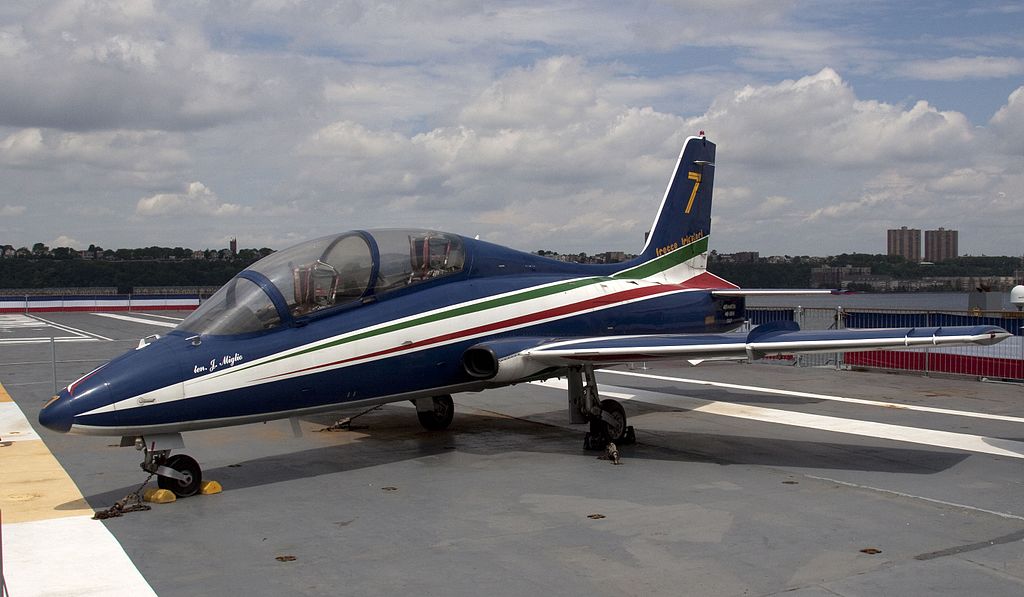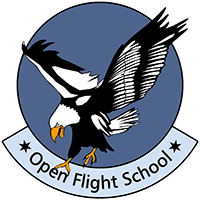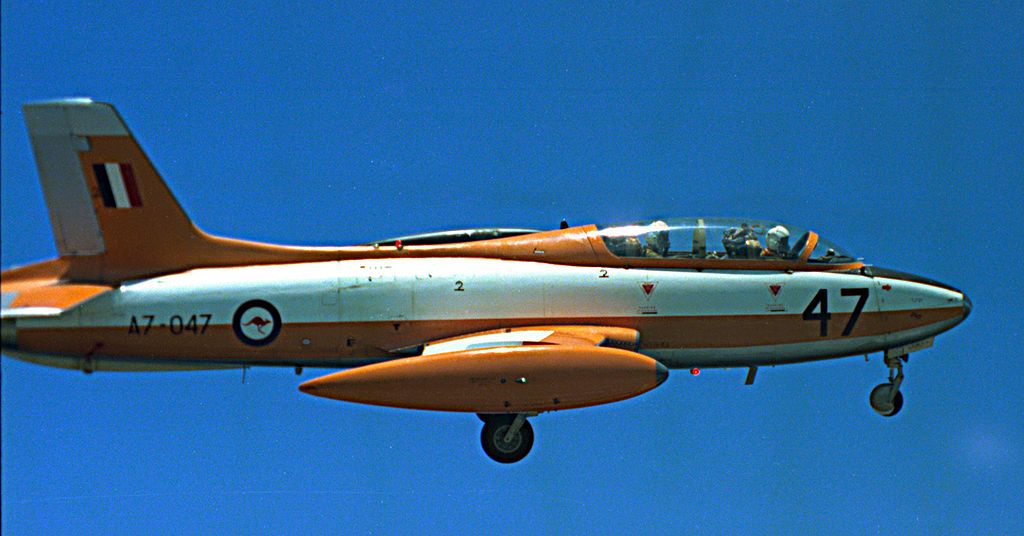Historical Background Knowledge
1. The development
The MB-339 comes from a series of aircraft designs by aircraft engineer Ermanno Bazzocchi for the Aeronautica Macchi of Varese such as the MB-308, MB-323 and finally, in 1954, the MB-326, a light jet trainer, of which a total of over 800 were built. The model abbreviation MB is derived from this: Macchi Bazzocchi.
For decades the MB-326 was used by the Italian Air Force for the first two flight training courses, Initial and Basic Flying Training, as well as by Alitalia for the basic training of its pilots. It was very successfully as a two-seater trainer. Export customers around the world followed.
In the mid-seventies, Macchi decided to develop a successor to the MB-326: the MB-339. The successful design features of the predecessor were retained but fundamental further developed was made to offer a modern trainer with good visibility, improved performance and up-to-date avionics with limited complexity.
The MB-339 is a simple ab-initio trainer with dual cockpit and a close air support capability (CAS). The rear pilot / instructor seat is raised to provide better visibility over the front pilot. The MB-339 is powered by an R.R.-FIAT Viper 632-43 Turbojet engine with 17.8 kN thrust. It is a simple, affordable and robust engine from the Rolls Royce Viper series. The structure of the wings was reinforced compared to the MB-326. The flight control has partially hydraulically controlled ailerons as well as mechanical elevators and rudders. The MB-339 has a modern electronic avionics system with modern instrumentation including ADI, HSI and Flight Director.
The improved performance is particularly evident in the take-off and landing characteristics, with low minimum speeds and short take-off and landing distances (see Section: Technical Data). In addition, the MB-339A can carry up to 1,815 kg of armament on six underwing stations.
In summer 1976 Commander Franco Bonazzi made the first flight with the prototype MB-339X. Another prototype was produced for flight testing and a third for load and fatigue tests.
The first flight of the production version ("A") took place in July 1978. The first export customer was Argentina with an order for 10 aircraft in 1980, followed by Peru with the "AC" version, to Malaysia with the AM-version, Nigeria and Ghana with the "AF"-version and Dubai with the "NAT"-version (National Aerobatic Team).
 In 1982 the "PAN"-version was officially introduced, which replaced the Fiat G-91 of the 313th AA Group of Rivolto in Italy. This is probably the best known version of the MB-339, as it has been the model on which the Frecce Tricolori, the national Italian aerobatic squadron, performs worldwide for many years.
In 1982 the "PAN"-version was officially introduced, which replaced the Fiat G-91 of the 313th AA Group of Rivolto in Italy. This is probably the best known version of the MB-339, as it has been the model on which the Frecce Tricolori, the national Italian aerobatic squadron, performs worldwide for many years.
There was also a special version, the MB-339K Veltro II, a single-seat fighter version of the MB-339, which first flew on May 30, 1980 and could be used for operational training, tactical support and ground attack.
1988 an improved version "C" of the MB-339 was finally introduced. It has greater fuel capacity (taking over from the MB-339B), a more powerful R.R.-FIAT Viper 680-43 engine, and modernized avionics with HUD, HOTAS, INS navigation, radar, and modernized navigation and weapon computers.
In 1990 New Zealand placed its first order for the "CB" variant. These aircraft were used for laser target illumination, radar detection and as a platform for the AIM-9L and AGM-65 Maverick and are still operated today by the US company "Draken International".
Eritrea, Malaysia and New Zealand placed further export orders for the "CE", "CM" and "CB" variants in 1991.
The last variant of the MB-339 was the "CD", which made its maiden flight on 24.04.1996. This model includes the adaptation of the pilot-aircraft interface to current standards. The avionics of this model were substantially modernized and digitized. It has three multifunctional screens, a HUD for each pilot, a modern HOTAS system, as well as an IRS and a mission computer. Together with a more powerful propulsion system, the MB-339CD enables the training of pilots in the latest generation of main weapon systems. The export version of the MB-339CD bears the model designation "FD" for "Full Digital".
In April 1997 Aermacchi reached 200 MB-339 aircraft delivered.
The MB-339 is the last model of the Aeronautica Macchi series. In July 2003 Aeronautica Macchi was merged with Finmeccania and named Aermacchi in Alenia. At the beginning of 2016 Alenia Aermacchi finally merged into the Aeronautics sector of Leonardo S.p.A..

